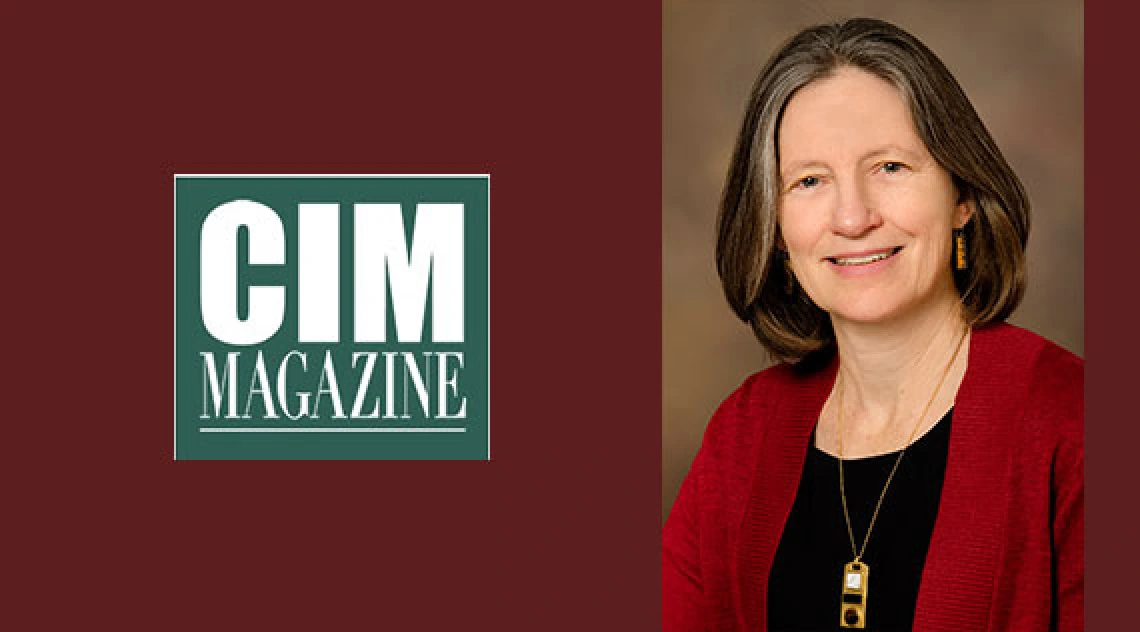Associate Research Professor, Julie Neilson, Featured in CIM Magazine

 Dr. Julie Neilson, University of Arizona (UA) Superfund Research Program (SRP) Investigator, was recently featured in the February, 2016 edition of Canadian Institute for Mining, Metallurgy, and Petroleum (CIM). The feature story on Dr. Neilson highlighted her work with local copper mines and her research efforts to develop and implement new reclamation techniques for old mining sites. Specifically, Dr. Neilson discussed what she has learned in her attempts to stabilize mine tailings with the establishment of vegetative cover. As she explains, the challenges encountered in stabilizing arid desert soils, which are low in nutrients and high in salt levels to begin with, are compounded when it comes to establishing a vegetative cover over the damaged and depleted soils derived from mining sites. In recounting a specific reseeding effort she collaborated on with the ASARCO Mission mine complex in Grupo, Mexico, Julie described, “ASARCO has several large tailings piles (they are trying to revegetate)…The first time I saw it, certain areas had vegetation doing really well, and in other areas it was almost barren….the only difference was that the capping material came from different places.” These outcomes introduced yet another issue in an already complex seeding scenario: the need for different seed mixes and treatments across a single reclamation site.
Dr. Julie Neilson, University of Arizona (UA) Superfund Research Program (SRP) Investigator, was recently featured in the February, 2016 edition of Canadian Institute for Mining, Metallurgy, and Petroleum (CIM). The feature story on Dr. Neilson highlighted her work with local copper mines and her research efforts to develop and implement new reclamation techniques for old mining sites. Specifically, Dr. Neilson discussed what she has learned in her attempts to stabilize mine tailings with the establishment of vegetative cover. As she explains, the challenges encountered in stabilizing arid desert soils, which are low in nutrients and high in salt levels to begin with, are compounded when it comes to establishing a vegetative cover over the damaged and depleted soils derived from mining sites. In recounting a specific reseeding effort she collaborated on with the ASARCO Mission mine complex in Grupo, Mexico, Julie described, “ASARCO has several large tailings piles (they are trying to revegetate)…The first time I saw it, certain areas had vegetation doing really well, and in other areas it was almost barren….the only difference was that the capping material came from different places.” These outcomes introduced yet another issue in an already complex seeding scenario: the need for different seed mixes and treatments across a single reclamation site.
Julie was also given the opportunity to discuss her personal research passion for microorganisms and the role they play in underground ecosystems. Julie explained to CIM that, “We don’t need to engineer the organisms, we just need to find the right ones….(moving forward) there’s a huge potential for mines to use strategies such as applying an inoculum of a bacteria or fungus that we know will survive in the system.” The potential for these microorganisms to thrive in depleted soil horizons or provide missing nutrients is an exciting prospect, but somewhat new to the field of mining reclamation. If explored further, Julie feels that the use of microorganisms could enhance the natural stabilization of mine tailings through reseeding and revegetation efforts, and that these efforts will help to return these sites back to their pre-mining conditions.


By tying Dr. Neilson’s reclamation work here in Southern Arizona to similar arid desert regions worldwide, the CIM feature article conveyed the importance of SRP work in the global mining community.

